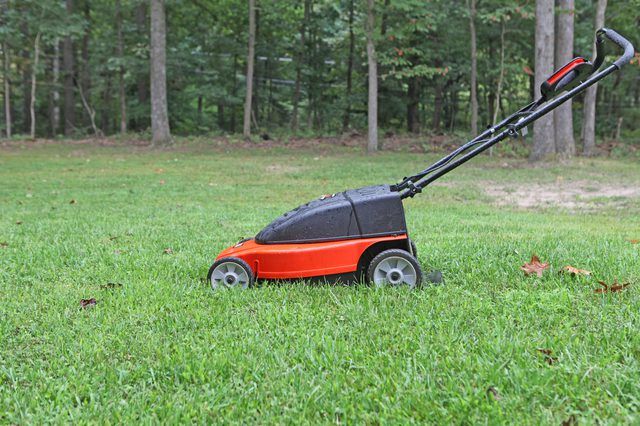Bulbs
Flower Basics
Flower Beds & Specialty Gardens
Flower Garden
Garden Furniture
Garden Gnomes
Garden Seeds
Garden Sheds
Garden Statues
Garden Tools & Supplies
Gardening Basics
Green & Organic
Groundcovers & Vines
Growing Annuals
Growing Basil
Growing Beans
Growing Berries
Growing Blueberries
Growing Cactus
Growing Corn
Growing Cotton
Growing Edibles
Growing Flowers
Growing Garlic
Growing Grapes
Growing Grass
Growing Herbs
Growing Jasmine
Growing Mint
Growing Mushrooms
Orchids
Growing Peanuts
Growing Perennials
Growing Plants
Growing Rosemary
Growing Roses
Growing Strawberries
Growing Sunflowers
Growing Thyme
Growing Tomatoes
Growing Tulips
Growing Vegetables
Herb Basics
Herb Garden
Indoor Growing
Landscaping Basics
Landscaping Patios
Landscaping Plants
Landscaping Shrubs
Landscaping Trees
Landscaping Walks & Pathways
Lawn Basics
Lawn Maintenance
Lawn Mowers
Lawn Ornaments
Lawn Planting
Lawn Tools
Outdoor Growing
Overall Landscape Planning
Pests, Weeds & Problems
Plant Basics
Rock Garden
Rose Garden
Shrubs
Soil
Specialty Gardens
Trees
Vegetable Garden
Yard Maintenance
How to Grow Creeping Myrtle
How to Grow Creeping Myrtle. Creeping myrtle (Vinca minor) is one of those rare perennial evergreen ground covers that flower. Once it gets started, it pretty much takes care of itself, although you may have to take steps to prevent it from spreading out of control and you may have to deal with one major disease. Pay attention when you shop for...
Creeping myrtle (Vinca minor) is one of those rare perennial evergreen ground covers that flower. Once it gets started, it pretty much takes care of itself, although you may have to take steps to prevent it from spreading out of control and you may have to deal with one major disease. Pay attention when you shop for nursery transplants because creeping myrtle is also commonly called periwinkle, lesser periwinkle, ground myrtle and running myrtle.
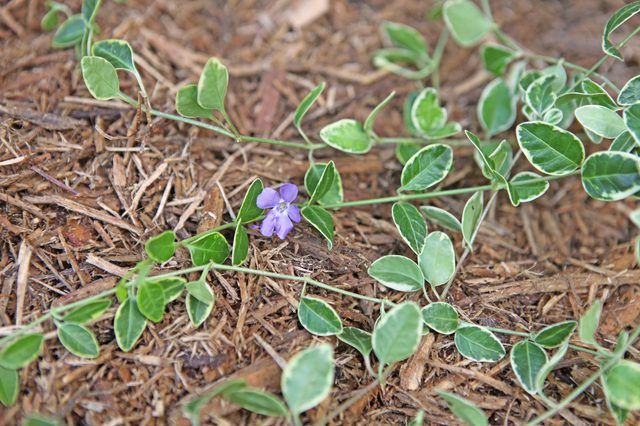
Creeping myrtle spreads by above-ground stems called stolons that trail in a mat or spread outward from a mound. Each plant in a mat grows up to 6 inches tall but spreads up to 3 feet wide. Creeping myrtle leaves are lustrous dark green on top with slightly white veins. Solitary blue-purple flowers with five pinwheel-like petals bloom in early spring, but you can buy cultivars that have white or reddish-lavender flowers. Creeping myrtle will grow in United States Department of Agriculture plant hardiness zones 4 through 9.
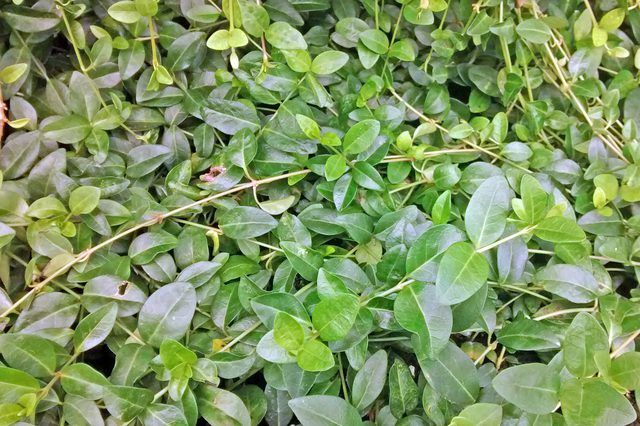
You can usually buy rooted creeping myrtle plugs in peat pots or cell packs, although they may come in containers. Plant the plugs 12 inches apart and mulch them. Field-grown plants at least 2 years old or plants grown in pots should be planted about 9 inches apart. Transplant in early spring or in September.
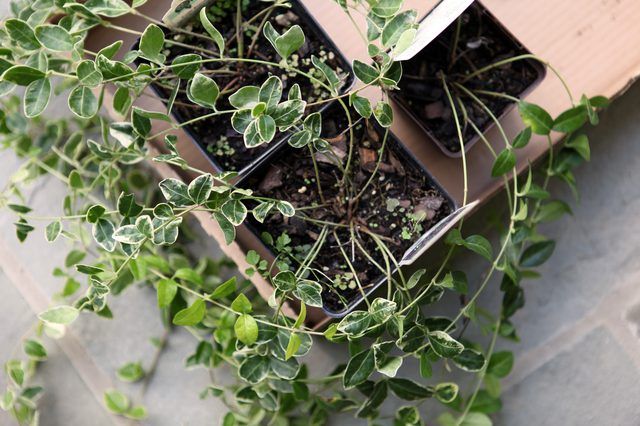
Creeping myrtle grows best in evenly moist, rich, well-drained soil with a pH of 6 to 8, although it will adapt to average soil. It prefers partial shade, but will grow in full shade and makes a good ground cover beneath shade trees. Full sun will reduce its vigor and may turn its leaves yellow. Growing it in USDA zones 8 and 9 requires lots of shade. Water creeping myrtle evenly for the first growing season to help the transplants get established. If the soil has enough moisture for mature creeping myrtle to grow, do not irrigate it frequently. Apply 6 to 8 pounds of 10-10-10 fertilizer in the spring per 1,000 square feet. Beware that creeping myrtle may spread rapidly under the best growing conditions.
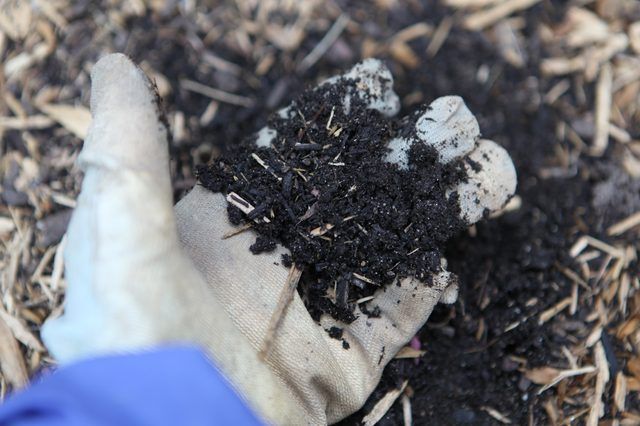
Creeping myrtle may be occasionally infected by a wide range of diseases that afflict ground covers, but fungal stem blight is a major problem. The fungus spreads through moist soil, striking both newly planted creeping myrtle and vigorous, mature plants. It typically appears in wet spring weather when the temperature is between 50 and 65 degrees Fahrenheit and sometimes in wet autumn weather. Dark brown to black lesions circle overwintered runner stems at the ground. The lesions spread along the runners within days, infecting nodes and stems growing from the runners that also touch the ground. Since the disease hits old runners hidden beneath new foliage you may not see the symptoms until it is too late. An entire stand of creeping myrtle may die in several weeks. You can’t control stem blight once it hits, but you can take steps to prevent it. Plant only disease-free, vigorous plants that you buy from a responsible nursery. Surround the new plants with black plastic mulch. Hold the mulch in place with gravel or rough-ground corn cobs and perforate it every 4 to 6 inches. This mulch also helps the creeping myrtle roots grow quickly and blocks weeds and grasses.
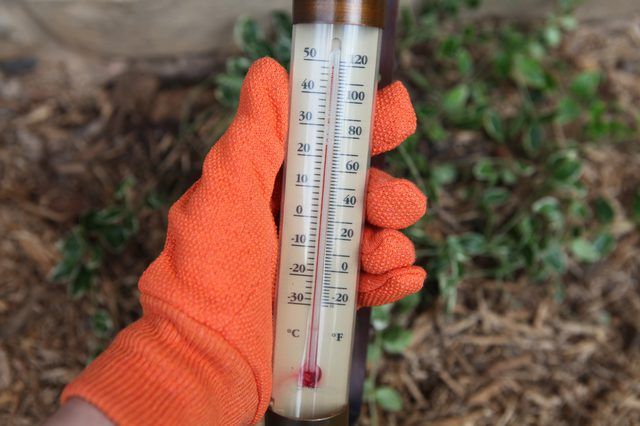
Creeping myrtle has an invasive tendency if you don’t control it. When the spreading mat jumps cultivation, it forms dense mats on forest floors, crowding out other plants. It is regulated as an invasive species in Georgia, South Carolina, Tennessee and Kentucky. You can control its spread by mowing or cutting then spraying an herbicide containing the active ingredient glyphosate on its wet leaves. Do this in July and October two years in a row. Glyphosate is a contact herbicide, meaning it kills everything it touches, including plants you may like. It is marketed in self-contained spray containers and mixes that you prepare for backpack sprayers. The preparation and application of glyphosate mixes for backpack sprayers vary by the brand and concentration. For example, to get the appropriate 2 percent solution of Roundup Pro, mix 2 2/3 ounces of the herbicide to each gallon of water.
